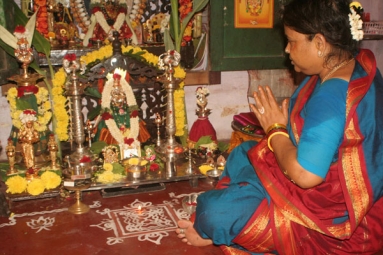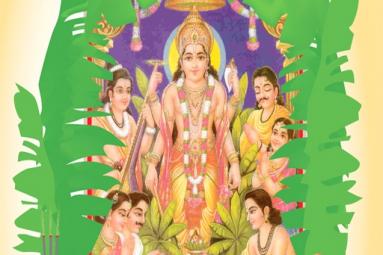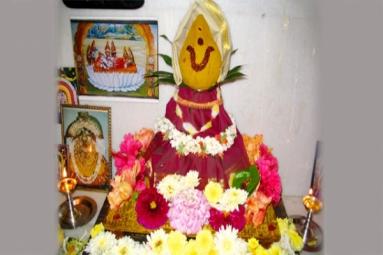
The Hindu ritual of aarti accrues from the ancient Vedic concept of fire ceremony or the 'homa'. Generally, one or more wicks made of cotton, or thin cloth strip, is soaked in ghee or camphor, lighted and offered to the deity. The term 'aarti' may also refer to the traditional Hindu devotional songs that are sung while the fire ritual is being performed. Apart from the national anthem of India, perhaps, the only other song sung popularly and lovingly across all age and social groups and regions is the aarati.
Though arti may be sung differently in different parts of the Indian subcontinent, the core intention never varies. All aarti songs signify the highest form of love for God. As per Indian beliefs and tradition, worshiping God through 'bhava' or emotion is the highest form of worship. And in arti, both the singing of the traditional hymn, or the devotional song, and the fire serve to prevent the deflection of the worshipper's concentration from the act.
In Sanskrit, the term aarti can be broken up into two words - "aa' meaning towards and "rati" meaning the highest love for God. Traditionally, aarati is done two or three times a day, at the conclusion of a puja, bhajan or havan. It is a mandatory ritual performed on all auspicious occasions of Hindus. The aarti thali, which contains diya, flowers, incense and akshata, is circulated in front of the deity and arti song is sung by all members present there. When arti is performed before God, it is believed that the plate and the light get blessed by the deity.
The pandit, or the priest, passes on the arti plate from one person to another, present there, who cup the flickering fire lightly with their down-turned hands. Then, they put their hands over the flame and then touch their forehead, as a gesture of seeking holy blessings. The plate on which the aarati is performed is usually made of silver, bronze or copper. Aarti is also performed in front of a person, either as a welcome gesture or to ward off bad influences from him. Infact, the whole purpose of arti is to ward off the evil spirits and bad omens.
In India, the aarti is also performed before people of high status, little kids during certain ceremonies, on people embarking or returning from a long journey (especially if it's a pilgrimage) and on a newly married couple when they enter their house for the first time, etc. The arti is also performed on some newly acquired land and before initiating some pertinent chore. There are different types of arti for different Indian deities and often arti contains important snippets about them.
Source: iloveindia.com













